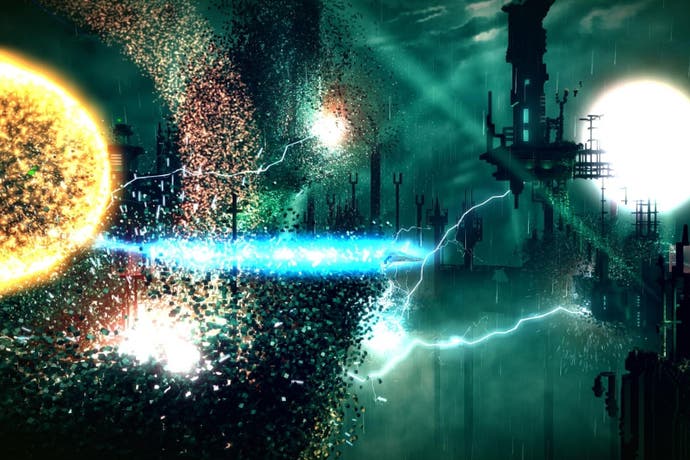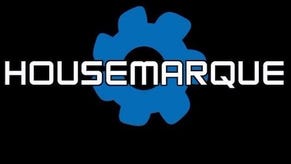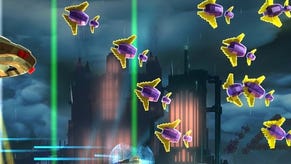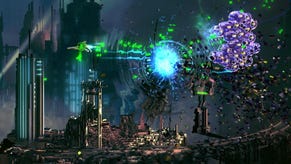Resogun review
Voxel ad astra.
If Super Stardust HD was Housemarque's twist on Robotron, then Resogun must be its Defender, right? It makes for a pleasing narrative: the hardware's moving forwards, but the Finnish arcade masters are clearly headed in the opposite direction, working their way ever deeper into Eugene Jarvis' cherished past.
The truth is a little more complex. Defender's handful of mechanics were shaken into vivid life by regular jolts of chaos as the flockers and the baiters wove mysterious paths through the scrolling levels. Resogun's 2D levels definitely scroll, you can shoot backwards and forwards, and you can even protect dinky, neon-green humans from abduction in between all the explosions, but Housemarque's enemies exist in a world of hectic predictability. They're zipping around in polite formations; they're warping in from Namco's galaxies rather than Williams'.
Just look at the finer detailing: Defender could offer you a nutty mechanic like a random hyperspace jump because it was fighting anarchy with anarchy. Resogun opts for a chainable boost instead - a calculated, educated risk for a game packed full of calculated, educated threats.
This balancing of risks powers almost all of Resogun's central thrills, in fact. Although you can race through the game on the rookie setting, firing blindly as you go, to work your way across harder difficulties or to get a proper foothold on the high-score table you're going to need to pay attention to the near-ceaseless stream of information lobbed back at you - much of it coming via a calm computer voice that updates you through the speaker in the DualShock 4.
Situational awareness is the key to mastery here. The side-scrolling levels are wrapped drum-like around a central hub, not because it's a cool effect (although it is), but so that you can always see what's going on elsewhere in the map - so that you can see what you're missing out on, and so that the frantic design can tempt you away from your safety zone.
Often what you're missing is your humans getting killed by aliens. Resogun keeps its flesh-and-blood collectables in cages like they're working shifts at some infernal sci-fi nightclub. It only frees them when you blast specific sets of enemies, highlighted in green, who warp onto the map at regular intervals. Let these greenies live and your humans die in prison; hunt them down before they disappear and they'll unleash a trail of light that zips across the map, pinpointing a little escapee freshly in need of a lift.
Picking up humans and returning them to a hub - you can even throw them to safety, like you're scoring a basket - will grant you a power-up: shields, perhaps, or a weapon upgrade. Miss them and they'll quickly be abducted. It's all so treacherous! Fight the odds and navigate the hordes and you could get something really useful. Play it safe, on the other hand, and you'll never know just how useful that specific something could have been.
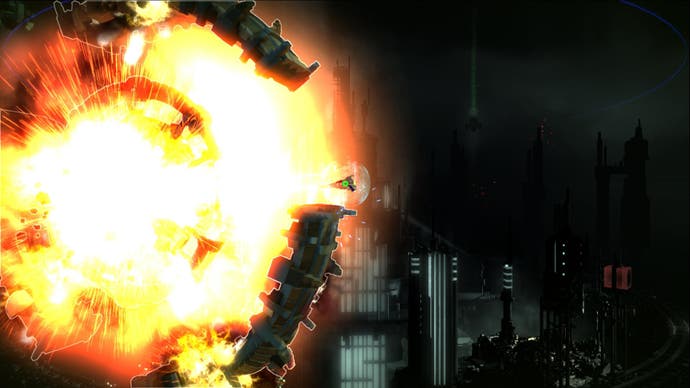
Humans are far from the only element in Resogun that's eager to lead you to ruin. On easy settings, you'd be just about forgiven for missing the game's simple multiplier system entirely. Work your way up through the ranks, though, and you'll start to realise that it's where the whole thing comes alive. As you zip around, you're trying to keep that combo fed by chaining kills together, and real defeat comes not with the loss of a ship, but with the withering of a x10 booster in an empty sector of space.
The multiplier ensures you stay close to the centre of the action, and it encourages you to use smart bombs and your super-powered overdrive weapon only when you really need to, although you may wish you could use the former more frequently - they look amazing as they ripple all the way around the curved edges of the drum.
It also tempts you back to that deadly, thrilling boost, which allows you to chug through foes with impunity as long as it lasts - and can itself be chained for surprisingly long periods of time if your aim is true. Boosting makes for a shooter with an extremely strong racing line and reveals the ingenious choreography of Housemarque's wave design. (The price, though, is that the predictability of Resogun's baddies means that high-level play often rewards memorisation as much as instinct.)
Adding a little next-gen spectacle to this smart throwback shooter is another brilliant idea from the old days. Absolutely every single thing in Resogun, from the gothic, Hugh Ferriss scenery to the bright clusters of enemies (ranked, ranged, seeking; caterpillars, rockets, squid) is made from voxels. Voxels! Little cubes that scatter and drop when blasted apart, that see levels shredded over time, and that allow the giant wheels or thick tendrils of Resogun's bosses to slowly build themselves in front of you before falling to pieces under your onslaught. So many moving pieces, and yet the frame-rate never falters and the landscape - thanks to some neat colour-coding - never sacrifices its readability.
"Resogun is the closest the PS4 launch line-up gets to offering a genuine next-gen thrill"
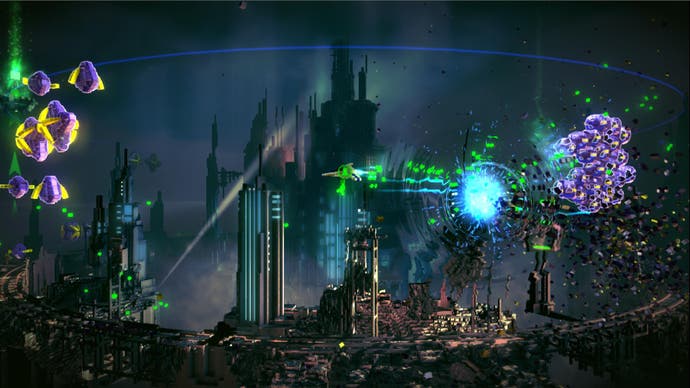
With a few basic ships to choose from and only a handful of levels to pick between, you'd be forgiven for concluding that Resogun is sweet but short. In reality, touring the sights is just the tutorial, and the true campaign unfolds as you work your way through the difficulty levels, headed from clumsy shooting to multiplier-maxing glory and from survival to show-boating mastery.
Resogun really is that rare kind of arcade game that feels like an entirely different beast when played on the toughest setting. It's also the closest the PS4 launch line-up gets to offering a genuine next-gen thrill. Granted, Housemarque's not offering the shock of the new, perhaps - all of the developer's best ideas are actually reassuringly elderly - but it's working with energy, enthusiasm, precision and love. Oh, and voxels. Look at them scatter!
